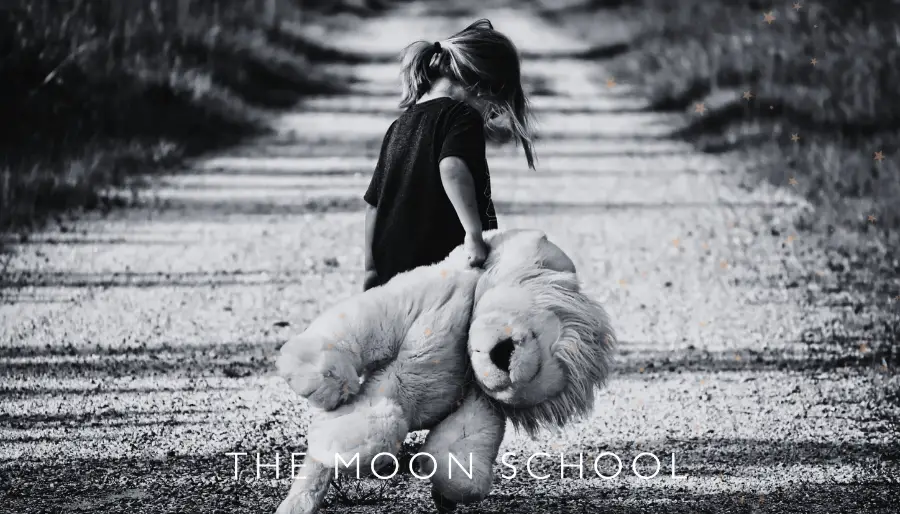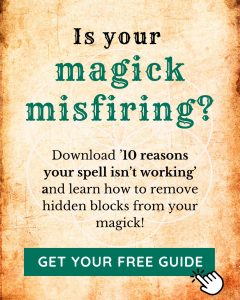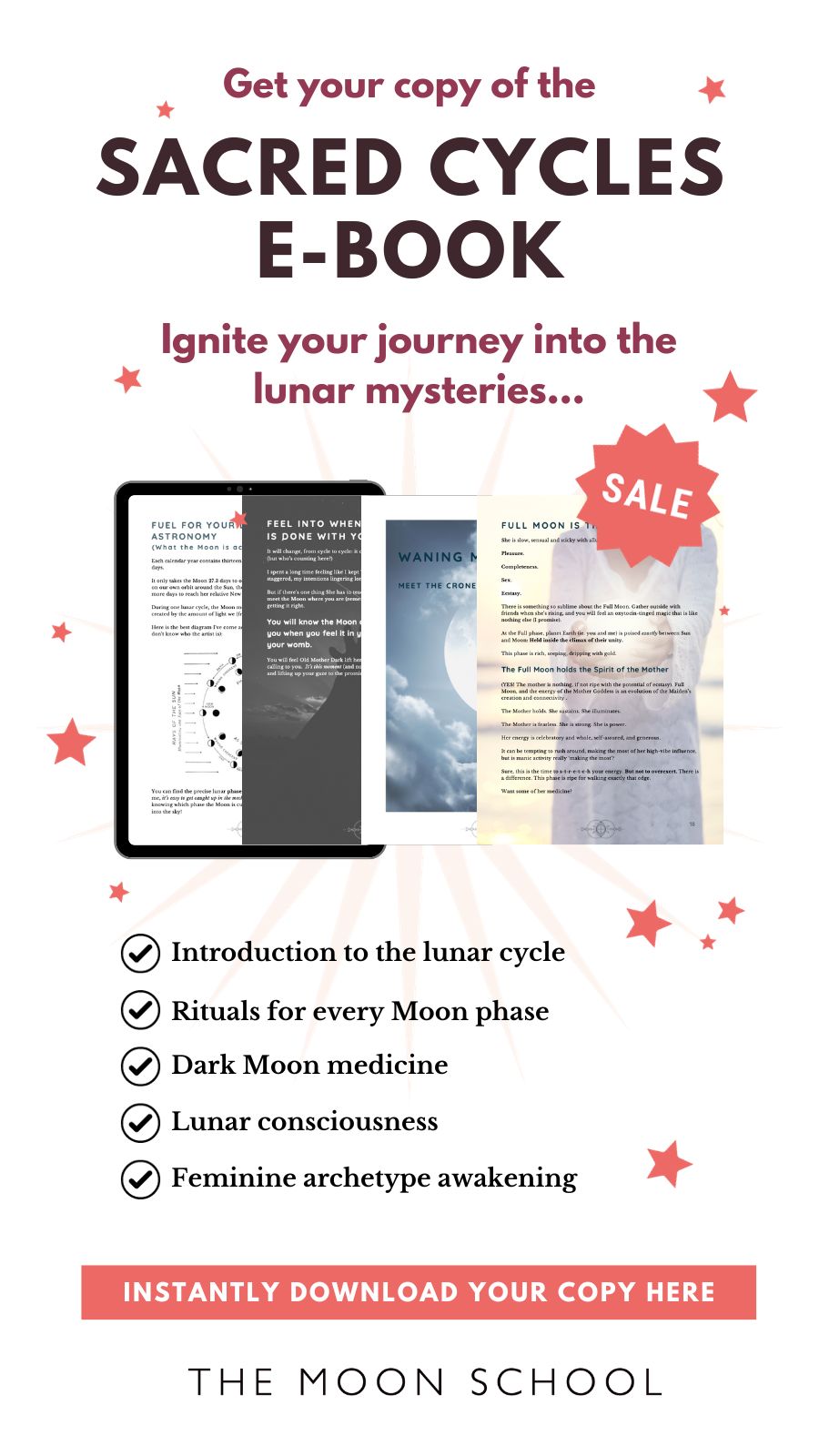Inner child work is an essential part of any personal growth and healing journey. Inner child work, also known as inner child healing and often part of ‘inner work’ is a therapeutic approach that addresses unmet childhood needs. These unmet needs are often the root cause of developmental traumas and attachment wounds developed during our formative years.
It’s important to understand that we all have a younger part within us that didn’t receive the love and attention it needed. Having inner childhood wounds isn’t unusual, and it doesn’t mean there’s anything ‘wrong’ with you!
What’s actually more unusual is having the courage and humility to go back as an adult and do the inner work required for deep healing.
In the following guide, you’ll discover a range of different techniques and therapies that can help heal your inner child. Creative modalities, guided meditation, supportive self-touch, reparenting, shadow work, and even talking with your inner child can all be deceptively simple! Yet embracing these methods will allow you to unlock and heal past traumas, process difficult emotions, tend to your needs and desires, and rediscover the joy and creativity often hidden inside your younger self!
Understanding the Inner Child
Before we dive into healing, let’s clarify what we’re actually talking about! What is the inner child, and why do we have one?
Concept of the Inner Child
The inner child is a term that describes the younger part of ourselves that’s been with us since childhood. It embodies our experiences, emotions, and memories from our formative years. When our needs are met and our developmental stages are properly integrated, we’re able to function as adults in a healthy and balanced way.
But when these needs aren’t met, and we aren’t able to fully integrate our experiences – both ordinary and traumatic events – part of our inner child can get “stuck”. We struggle with accepting things or ocing on. And it’s at this stage of development, where we end up operating from as an adult.
Childhood Wounds and Trauma
Childhood wounds are the emotional injuries that result from unmet and un-noticed needs and attachment issues during your formative years. These wounds can lead to lingering emotional pain that affects your adult life, such as low self esteem, codependency in relationships, self sabotaging behaviours and the classic – stress.
Childhood trauma is another crucial aspect to understand when doing thins kind of inner work. A traumatic event that occured during your upbringing can have a lasting impact on your mental health and well-being. AND an event that seemed fairly ordinary may also create childhood trauma – remember, trauma is totally subjective.
By acknowledging the effects of childhood trauma, it paves the way towards self-awareness and personal growth. It’s not only helpful in the healing process, it’s imperative.
Why is inner child work so important?
Inner child work is a truly powerful tool for enhancing your mental health and overall well-being. By addressing the needs that went unmet in your childhood and healing the attachment wounds that subsequently developed, we can bring about profound changes in our lives. This is because the behavioural patterns and coping mechanisms learned in childhood are like the bedrock on which your adult self sits.
As you begin to explore your inner child, new levels of self-awareness will open up, allowing you to better understand the roots of your emotions, habits and mental health issues. You’ll see your inner child reflected in your current circumstances, and get a greater sense of how to affect change from the inside out.
It’s hugely empowering.
In turn, this increased understanding can help you tackle mental health challenges, improve your relationships, and foster personal growth beyond the relams of what you currently think is possible.
Engaging in inner child work can also help you combat feelings of anxiety, depression, and emotional pain. You’ll be able to finally heal your past and rewrite your emotional narrative.
How to heal your inner child
Just like shadow work, there are a myriad of ways to approach inner child healing. If you already do inner work of some kind, then you can use the techniques and practices that already work for you. Otherwise, read the suggestions below, and notice what resonates. Also, if if you feel resistance to any of the techniques, condsider leaning in that too.
1. Practice self-compassion and self-Love
The very first step towards inner child healing is cultivating self-compassion and self-love. Understand that it is essential for your wellbeing to be gentle with yourself, especially when dealing with unresolved emotions from your childhood. Practice self-care by ensuring that you set aside time for activities that bring you joy and relaxation.
To promote positive emotions, take a few moments each day to remind yourself of your strengths and accomplishments. Acknowledge any progress you’ve made in your personal, professional or emotional life. This will help you build your self-confidence, and you’ll be more likely to show yourself the kindness and love you deserve.
2. Reconnect with your younger self (play!)
Another crucial aspect of inner child therapy is reconnecting with the younger you.
To create a strong connection with your inner child, engage in activities that you enjoyed as a kid! Did you love drawing, dancing, or playing games? Work to incorporate a sense of playfulness into your daily life. This can help you bond with your child self and promote healing.
But it’s not all fun and games! This part of your inner work also requires you to identify the emotions you experienced during past trauma and empathize with the child you were at that time. Grab a journal and spend time reflecting on childhood memories. Allow yourself to feel any emotions that arise without judgment.
3. Have a conversation with your inner child
Another helpful technique is to have a conversation with your inner child. It may sound silly, or feel uncomfortable at first, but go with it!
You can try doing it through meditation, where you imagine meeting your child self in a difficult situation, and offer comfort, support, and validation. The Completion Process by Teal Swan offers a great method for doing this.
4. Do inner work and reflection
Meeting your wounded inner child involves exploring your past emotions and experiences. Dedicate a little time each day for self-reflection through journaling. Asking yourself thought-provoking questions, and allowing your unconscious mind to move through you, is a powerful way to access your inner world.
5. Try art therapy and creative self expression
Art therapy can be another powerful tool for connecting with your wounded inner child. Creative expression enables you to express and move emotions and experiences from your past that may be difficult to articulate verbally. Try techniques like painting, drawing, or even building with clay.
Let your creativity flow and don’t worry about the final outcome!
The goal is to provide a safe space for your inner child to express themselves – this process in iteslf is healing.
6. Practice the loving kindness meditation
Loving kindness meditation is a powerful technique to help you cultivate compassion and forgiveness for yourself and your inner child. Find a quiet space where you can practice this method regularly, and follow these simple steps:
- Seated comfortably, close your eyes and take a few deep breaths.
- Begin by directing loving kindness towards yourself by silently repeating phrases like “May I be happy, healthy, and peaceful.”
- Slowly shift your focus to your inner child, imagining yourself at a younger age, and extend similar well-wishes to them.
- Finish the meditation by generating compassionate feelings to all beings.
7. Try mirror work
Mirror work involves connecting deeply with yourself (and subsequently your innr child) and building up self-awareness. By engaging in mirror work, you’ll be able to better understand your emotions, behaviors, and decisions in the present moment. That’s crucial – because although inner child work involves things that did or didn’t happen in the past, you can only ever work with what is alive in the present moment. Here how to get started:
- Stand in front of a mirror, maintaining eye contact with yourself.
- Vocalize positive affirmations and words of encouragement to your reflection.
- Imagine your inner child standing beside you, and express love and support to them.
8. Reparent yourself
Either through meditation or active imagination, envision yourself as a child, and then step into the scene as your adult self. Be the loving, compassionate parent that your inner child needed, and provide comfort and guidance.
9. Challenge the limiting beliefs you formed in childhood
We all have a narrative of beliefs that acts as a framework for our life experiences. For the most part, this framework originates in childhood. But as you now know, the emotional neglect, traumatic experiences and even physical abuse you may have gone through in your youth can distort the way you perceive the world today.
You can start healing these distortions by tapping in to the limiting and negative beliefs you hold, and tracking back to see which childhood experiences they come from.
If you’re curious to explore your limiting beliefs (and how they are sabotaging you in your adult life, check out the Honeyed Shadow guided shadow work journey for beginners.
Integrating your inner child into daily life
Once you begin to integrate inner child work into your life, and develop skills around these processes, you’ll likely discover the joy of your inner child emerging more and more each day!
But here are a few ways to help integrate the healthy and healed expression of your inner child into life (even for those with the most busy schedules!)
Pay Attention to Your Own Needs
Just like a parent attending to a child’s needs, it’s crucial to pay attention to your own. Listen to your body and mind when they communicate feelings, thoughts or emotions. Acknowledge and validate them as you would for a child. And remember, it’s okay to reach out for help when you need it.
- Start by identifying your emotions
- Acknowledge them without judgment
- Validate your feelings and communicate them effectively
Create a support system
A strong support system plays an essential role in the process of healing your inner child. Surround yourself with people who make you feel safe, loved, and respected. Find friends or family members who can be a part of your emotional support system. Establish boundaries with those around you.
How long does inner child healing take?
Healing your inner child is a personal journey that takes time, patience, and buckets of compassion. It begins with recognizing the presence of your inner child and acknowledging the unmet needs and pain they carry. As you uncover the negative thoughts, feelings, and experiences that have shaped your life, you can start to heal those wounds and establish a healthier relationship with your inner self.
But it’s not a quick fix!
Throughout the healing process, it’s essential to remember that change doesn’t happen overnight. It’s a gradual process that requires you to be gentle with yourself as you confront your past and work towards a better future. Here are some steps to help guide your journey:
Recognize your triggers
Pay attention to situations that elicit strong emotional reactions. These moments can reveal underlying issues tied to your inner child.
Reconnect with your feelings
As you delve into your past, allow yourself to feel the emotions associated with your unmet needs and unresolved pain.
Practice self-compassion
Treat yourself with kindness, understanding, and care, especially when dealing with challenging emotions.
Engage in self-soothing activities
Find ways to calm and nurture yourself. This might include activities like journaling, spending time in nature, or practicing yoga.
Embarking on the journey to heal your inner child may feel daunting at first, but the rewards are well worth the effort. As you work through the pain and unmet needs of your past, you’ll discover newfound resilience, self-confidence, and emotional freedom. Remember to take it one step at a time, lean on supportive people in your life, and never be afraid to seek professional help if necessary.
By doing this kind of inner work, you’re giving yourself the opportunity to grow, heal, and thrive, ultimately becoming the best version of yourself. So, take a deep breath, roll up your sleeves, and embrace the process!
Your inner child has been waiting for you, and together, you can create a healing experience that will transform your life.






